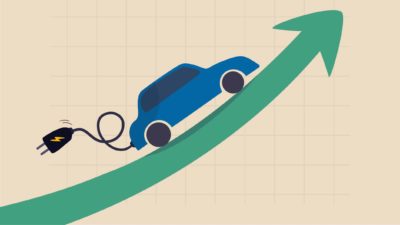This article was originally published on Fool.com. All figures quoted in US dollars unless otherwise stated.
With high inflation pushing up the cost of virtually everything while salaries aren't keeping up, investing might seem like a luxury you can do without until things stabilize. Unfortunately, that thought process can lead to you falling ever farther behind. After all, investing gives you the chance to let your money work for you, and over time, a strong portfolio can help you cover the gap that your stagnating salary won't.
That makes investing more important now than it has been in quite a long time. After all, every dollar of unearned income you receive is a dollar you don't have to cover from your salary. Add the compounding effect of your investments potentially growing over time, and a decent portfolio just might provide you your best approach to fighting the runaway cost pressures we're all facing.
Start by getting your costs under control
Of course, with your costs escalating, it can be challenging to come up with the money to invest in the first place. On that front, there's a straightforward approach you can take to help you get ready to invest. Start by tracking your expenses -- every penny -- for around two months. In this stage, there's no need to judge where your money is going, just write it down. On top of that tracking, write down an estimate for the regular costs you face that don't hit monthly, like birthdays, holidays, and insurance.
Once you know where your money is going, look over those expenses and mark them as red, yellow, or green, based on your own priorities. Money you're spending absentmindedly or that you otherwise neither want nor need to spend, mark red. Money that is going toward critical parts of your life that you can't or won't live without, mark green. Everything else, mark yellow.
For the red coded expenses, the next step is simple: stop spending on them. Those are costs that you're facing that aren't at all a priority for you. When it comes to the green expenses, those are fine to hold onto, as long as they're not overwhelming your income. Still, over time, you can look for ways to get them down, such as paying off your mortgage to lower your housing costs.
To tackle your yellow colored costs, you've got some work to do. Those are things you're spending money on that aren't super-critical to you but you're not quite willing or able to completely do without. For these costs, you need to optimize. For instance, you might want to switch from cafe-bought coffee to the home brewed variety, or even the free coffee that could be available at your office. Likewise, a programmable thermostat can help you cut down on energy use without otherwise affecting your life.
Between cutting out the red expenses and optimizing your yellow expenses, you should be able to put some space between your income and your outgo. If not, go back to your spending list and see if there's any more yellow expenses you can code red, green expenses you could code yellow, or yellow expenses you could continue to optimize. Your goal here is to free up as much cash as you can while minimizing the impact to the things you prioritize in your life.
Next-tackle your debts
Once you have your costs where you need them to be, your next objective should be to get your debts under control. The most efficient approach to pay off debt is known as the debt avalanche method. To use it, start by lining up your debts in order from the highest interest rate to the lowest interest rate.
On all debts except your highest interest one, pay the minimums. On that highest interest debt, pay as much as you can above that minimum until it's completely paid off. After that debt gets paid off, take all the cash that you had been paying toward it and add it to your new highest interest rate debt. Repeat the process until nearly all your debts are paid off.
It may be OK to keep some of your debts out of the avalanche, paying only the minimums on them until they're paid off. For that to be true, the debt should have a low interest rate, a low payment, and serve a key purpose for your future. Debts that may fit the bill are often ones like mortgages, medical debts, or auto loans on modest, reliable transportation.
Finally-start investing
By getting both your everyday costs and your debts under control, you just might find that you've freed up way more cash to invest than you initially thought possible. Make sure you set up a modest emergency fund, and then get to work investing for the long term future.
If you haven't invested before, a low-cost, broad based index fund is a great choice. You'll get market-like returns with very little effort. In addition, you're likely to outperform the vast majority of Wall Street's best and brightest active fund managers over time. Once you're in that spot, you'll be at the point where your money can be working for you -- and helping you fight the crazy inflation we're all facing.
Get started now
The sooner you get started on this approach, the sooner you can get to the point where you have a powerful tool at your side that can help you keep up with ever-escalating costs. Make today the day you begin your journey, and give yourself your best chance possible of reaching the point where the returns on your money can cover a decent chunk of your costs.
This article was originally published on Fool.com. All figures quoted in US dollars unless otherwise stated.









